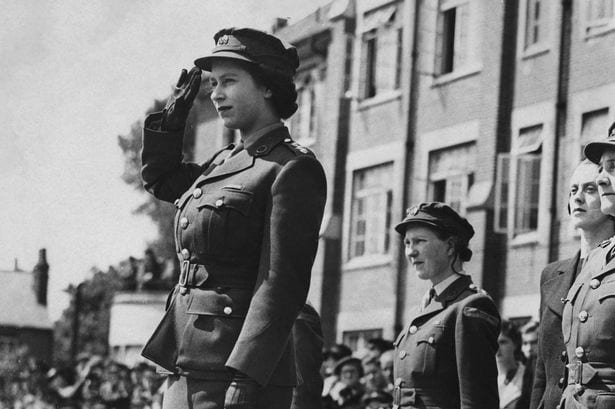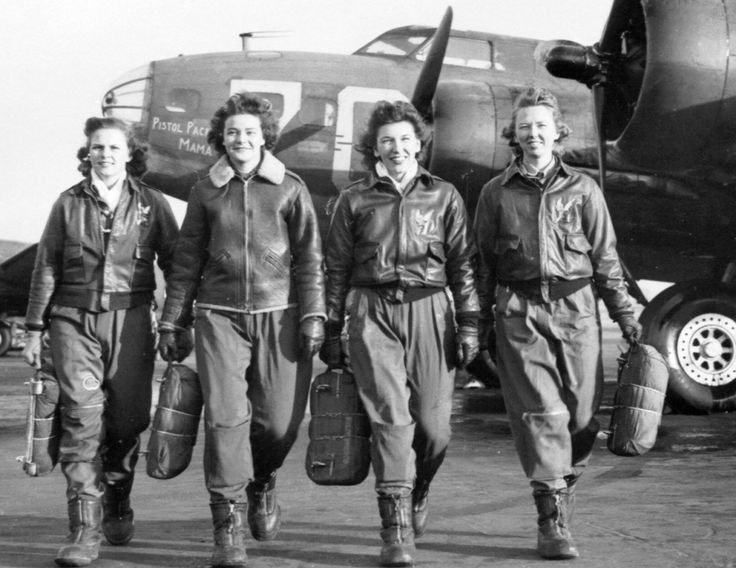After the 9/11 attacks on the World Trade Center, it looked like we might be in a total war against Osama Bin Laden, Al Qaeda, Iraq, and their gangs of terrorists and jihadists. With that possibility looming, military people, pols and commentators started talking about reactivating the Selective Service � i.e., The Draft, as it was called, back in the day. In the context of our contemporary push to let women participate in every occupation, including military service, it was inevitable that including women in the Selective Service pool would be part of that discussion.
As it turned out, the Draft didn�t return because President Bush and his military inner circle decided against total war – choosing to wage a �limited war� instead. In other articles I have pointed out that this drew the war out beyond the patience-limit of the American people and produced enough war-fatigue to give Democrats control of the Congress in 2006.
Peacenik Barack Obama took office determined to end our military activity in the Middle East and withdraw our troops. �I was elected to end wars, not to start them,� he famously proclaimed. Some of his troop-withdrawals were from theaters where we really should have kept a military presence. Our absence allowed Al Qaeda to reform and rearm as ISIS, renew serious military actions, and retake territory which we and our allies had pacified at dear cost. Today we�re reliving all this with Joe Biden�s chaotic withdrawal of our troops from Afghanistan.
Added to these reversals are the threats of a potentially nuclear-armed Iran and a bellicose North Korea that already has nuclear weapons. Strategically located on the Pacific coast of Asia, the Hermit Kingdom is controlled by a young dictator who seems determined to obtain long-range ballistic missiles capable of reaching the continental USA. Indeed, some military analysts believe he already has that capability and might be looking for the right opportunity to use it.
Americans� fear of these threats helped elect Donald Trump to the presidency in 2016. Despite a torrent of political opposition � including false charges of treasonous conduct invented by Mrs. Clinton�s campaign � he made good on his promises to calm (or eliminate) these dangerous external situations during his single term.
Unfortunately, a large bloc of voters ignored Mr. Trump�s peacemaking efforts when they (apparently) voted in large enough numbers to put Basement Joe in the White House. Under Joe�s befuddled guidance and incautious proclamations � amply reinforced by media eager to report on a major conflict � we now find ourselves stumbling (or being pushed) toward the brink of war with a dangerous, unpredictable Russian oligarch who is rattling his own nuclear capabilities.
Besides reminding older citizens of previous wartime privations and inconveniences, this new war scare has resurrected the old ghost of the Selective Service, including the contentious, politically explosive issue of including women in it. I read an article which reported that military officials are considering including women in a revival of the Selective Service. Of course, the issue is far from settled. During the debate twenty years ago, many commentators insisted that the draft must remain male-only, as before. A career soldier wrote that a civilized society must �protect� women from the coarsening violence of war.
Women weighed in, too. In �Unfair Query in Warfare,� Washington Post columnist Kathleen Parker wrote: ��the purpose of a draft, as currently conceived, is to create a combat-ready force. Since women aren�t permitted to fight in direct combat, a female draft is irrelevant.�
She argued that women are not up to the task, physically. (I wondered how that statement would be tolerated in any other vocational context, or at any other time.) Miss Parker said she was a twig-like girl with a predisposition to help injured insects � hardly a candidate for carrying a 100-pound pack over rough terrain at the front.
In past wars, of course, plenty of skinny, nerd-like guys (with eyeglasses and peach-fuzz beards) never thought they could become soldiers, either. But Miss Parker had posed a Straw Man (or Woman). Except for a few extremists, no one is proposing that twig-sized girls should hump heavy gear over rough terrain at the front or hold off enemy soldiers from a foxhole. A combat-ready army consists of many more personnel than front-line soldiers.
One female soldier, Jessica Lynch, became a poster girl for combat women in the Iraq campaign. She received the Purple Heart and was decorated for bravery under fire after being captured, treated in an Iraqi hospital, and rescued by American troops. Her story had international coverage, although her injuries actually came from a vehicle accident, and she did no shooting. (Details, details�) She got $1 million for the film rights to her story.
Certainly, the public shrinks in horror from sending young women into harm�s way and risking their capture or death. I do as well, since some of my granddaughters, who range in age from 25 to 34, might be called to serve in coming years. The issue is more than academic in our family.
Over the last 30+ years, integrating women into the military services was hailed as the opening of doors to job- and career-opportunities. Risk was ignored. Somehow, the prospect of Mars calling to collect his bill was overlooked. But collection-time came round. Many female reservists were called up and shipped out to the Middle East for the Afghanistan and Iraq campaigns.
When the Iraq war erupted, the possibility of shipping some of those young women back in body bags didn�t sound very good. Our local newspapers carried stories of young, female reservists leaving their families and heading for Iraq. Some were mothers of young children.
�I signed up to get help paying for college,� said one young mother. �An actual war never occurred to me.� She requested discharge to avoid going to war. Others were more philosophical, figuring that the wheel had turned and their number had come up. �We trained for this. Now it�s time to do it,� said one female soldier. (Not exactly �let me at �em,� but a respectable, soldier-like response.)
The �women at war� issue was not thought through during those halcyon peacetime years of expanded military opportunities. Women have pushed for (and achieved) some combat duties in all services, including the Marines where women may now try to qualify. A daughter of friends is a back-seater in carrier aircraft. Many women have also reached high rank. With war looming, women can hardly be excused because of domestic squeamishness. The military services could not accept such a loss of personnel during wartime.
In my own youth, circa 1960, all young men had to register for the Selective Service within five days of reaching age 18. If attending high school or college, they were eligible for a student (S-2) deferment, subject to maintaining �good standing� (typically a C average) and �full-time� enrollment. By law, the Dean had to report any male students who fell below the stipulated standing or class-load. Those men were drafted immediately � usually within a few weeks of the semester�s end.
I recall this happening to several college classmates. Their future plans were placed on hold until they completed their �military obligation.� The rest of us had merely postponed it until after graduation. And some were shocked to learn that the S-2 deferment made us eligible to be drafted until age 35. (Beware of that fine print.)
Doctors, dentists, and other medical people could also expect to be drafted immediately upon receiving their degrees. Marital status provided no cover or exception for them. Nor did advanced-degree status in other fields. In the mid-1950s a good friend of mine was drafted during the final stages of his MS-program in physics, when he was carrying only a part-time course-load. He was a curiosity in his army-unit. Remember, all this was during peacetime.
Women had no similar concerns. But in those days women did not usually aspire to professional careers where they would compete on equal footing with men. There was still a gender-barrier to many occupations. Few women entered engineering, medicine, business or law. Female teachers were often paid less than male teachers. Most women expected to marry and have children. It was a much different time.
To be acceptable, policies and laws need to be fair and also appear to be fair. In today�s America it will be seen as entirely fair for single young women to accept equal responsibility for defense of the nation � should that need arise � since they enjoy so many of its opportunities. And it will be considered unfair for women to pursue careers, uninterrupted, while only men are disadvantaged by the obligations of military service.
Today, young women anticipate climbing the career ladder as fast as men � even faster, wherever possible. Their demands for equal pay and equal opportunities for advancement are today�s cause c�l�bre. So a renewed Selective Service, should it occur, must consider interruption of civilian vocations equitably for both men and women.
Imagine the uproar if some compulsory service for women should be proposed, from which men are exempted. Like their male counterparts, young women will have to park the sports car, turn off the entertainment center, and learn, first-hand, the sobering lesson that in a free society the enjoyment of major opportunities comes with major responsibilities. There are no free passes.
Politicians brag that America has �grown up� to full equality for women. The Draft � should it return � might reveal if our �maturity� is more than skin-deep. Women drafted to help the war effort need not serve in combat roles, although some have voluntarily done so in the past. They can drive vehicles, perform administrative tasks, and fill the myriad support functions of military units, as women did during World War II � our last full mobilization.
What women cannot do is pretend that military service has naught to do with them, just because real bullets are flying. In the past, women didn�t enjoy full opportunity in the marketplace or the military. Nor were they asked to share full responsibility for the nation�s defense. But it is a new day � a Brave New World.
No going back now.

*********
- Crown Princess Elizabeth served as a driver in the motorized arm of the British Army, 1944-�45. She entered service at age 18.

